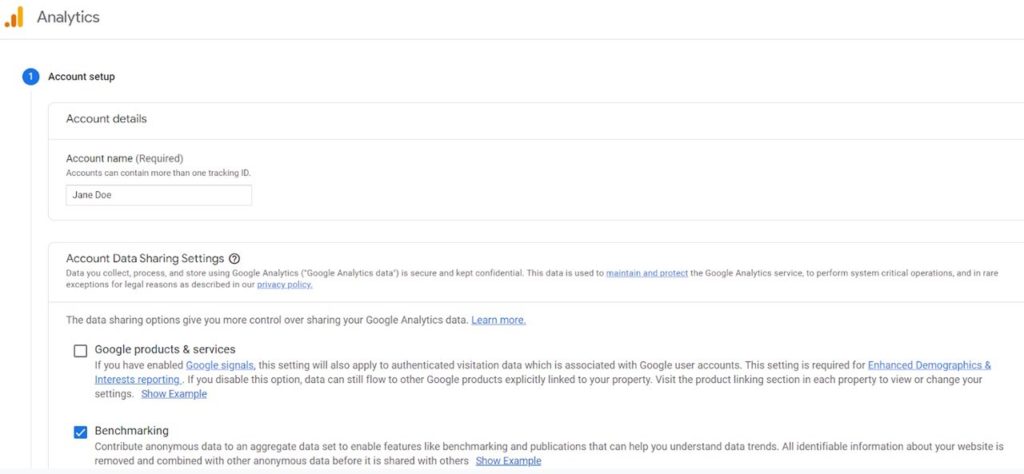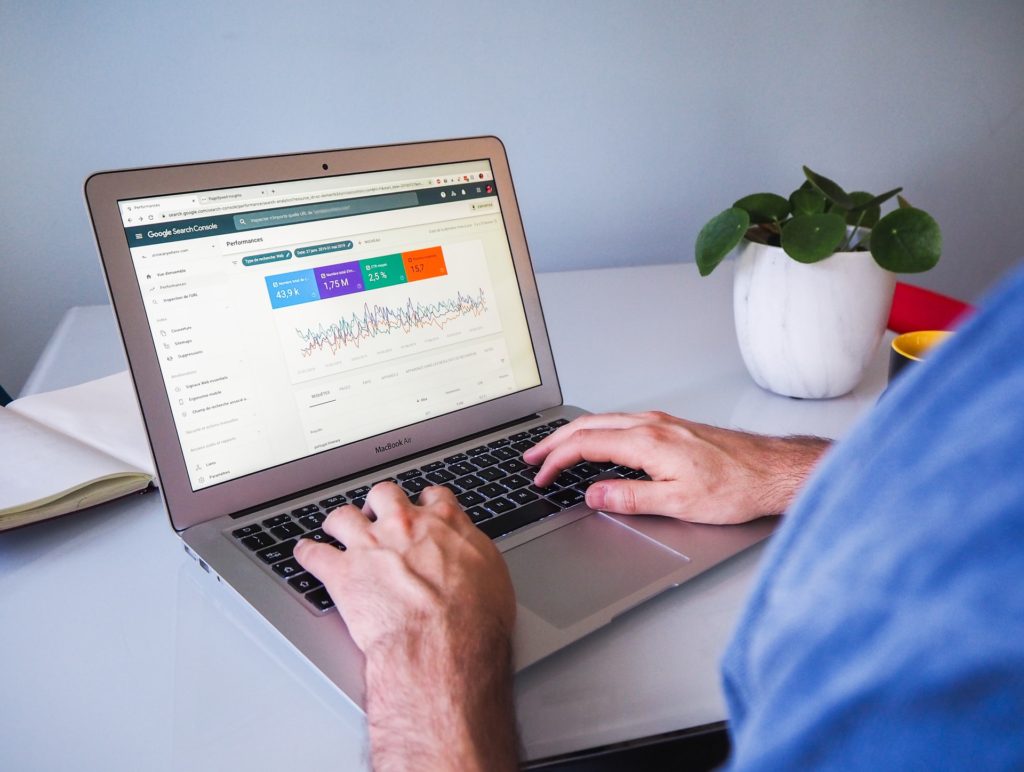
In 2022, having a website is a fundamental part of doing business. It’s probably one of your key sales tools. After all, in the digital age, your business may as well only exist if it can be found online.
And yet, many business owners don’t truly know how to quantify their website’s performance.
Enter: Google Analytics.
This in-depth tool that helps you better understand:
- Who’s visiting your website
- How they got there
- What they’re doing once they arrive
- If your website is actually helpin you drive sales
That’s why it’s one of our 14 business management tools we can’t live without.
But with the massive wealth of insights it offers, Google Analytics can be pretty cumbersome.
So, this article will share some basics, help you get started, and point you to additional resources to learn more.
Setting Up Google Analytics

Sign-up for Analytics by going to this sign-up page and clicking the “Get Started” button. From there, you’ll be prompted to create an account by filling out a simple questionnaire with three sections:
- Account setup and data sharing sections.
- Property setup. Your “property” is your business website or app. If you have both, it would be two separate properties.
- About your business and reason for using Google Analytics.
Next, accept the Terms of Service and access your Google Analytics homepage. There are options to create properties, import data, and other features. You’ll want to do two things right away:
- Create a Property for your website or app (learn more from this Analytics Help article).
- Use the “Setup Assistant” on your Analytics home page to configure settings and features that allow you to collect and analyze data.
Take your time with the setup process and make sure to utilize the extensive database of articles and support on Analytics Help.
What to Track with Google Analytics
Once you’ve set up Google Analytics, you can start collecting and analyzing data, or metrics. If your account is brand-new, it’ll take a bit of time for Google to collect data to start with.
This Analytics Help article explains how metrics are calculated and how they can be reviewed in reports.
Here are the four main areas to focus on.
1. Audience Metrics
The first set of data you’ll want to look like is all about your audience—i.e., who’s checking out your website. Popular metrics include:
- Traffic and pageviews: How many people go to your website and specific webpages.
- Number of Sessions per User: How many times people come back to your website.
- Pages per Session: How many pages they check out when they visit your website.
- Average Session Duration: How long they are visiting your website.
- Bounce Rate: The percentage of website visitors who leave without taking action like clicking a link or making a purchase.
This data shows you how interested and engaged people might be with your website.
For example, if you have a high number of pages per session but also a high bounce rate, it shows they’re interested enough to look around but aren’t compelled to take action.
You might want to look into why that is and see if those visitors can be converted into buyers.
2. Acquisition Metrics
You can take the audience metrics a step further by reviewing an acquisition report. This shows you how people are getting to your website. You’ll see a breakdown of how many people visited your page from various marketing channels such as:
- Direct search (i.e., searching for your company on Google).
- Paid search via an ad.
- Affiliate links.
- Social media.
These metrics are useful because it tells you which marketing channels are most effective. Moz has a comprehensive guide to Acquisition Reports for further reading on it.
3. Behavior
One of the main benefits of Google Analytics is that it can tell you exactly what your visitors do on your site.
There is a Behavior Overview report that provides the following information for each page:
- Average time spent on each page.
- Bounce rate.
- Unique pageviews.
There is also a very helpful behavior flow report, which is a visual representation of how each visitor moved between pages on your site.
For example, you can see where visitors go, what’s of interest to them, and where they might be dropping off.
If your visitors are bouncing around a bunch of pages without making a purchase or taking other action (i.e., contacting you), you might conclude that:
- Your layout is confusing
- Your content isn’t compelling
- Your site lacks the key information to convert the sale
Intechnic provides an in-depth guide on behavior analytics options and reports.
4. Conversions
Any activity that’s important or of value to your business is considered a conversion in Google Analytics. Examples include:
- Signing up for a newsletter.
- Making a purchase.
- Filling out the contact form.
In Analytics, you set these valuable activities up as “goals” and you can create as many as are important to your business to track.
You can then look at goal or conversion reports to see how successful you are in promoting those actions and what path visitors take through your site to get there.
For instance, depending on what initiatives you undertake, it will tell you whether conversions came from:
- Your paid ads
- Your blog content
- Your email content
- Your social media posts
Analytics Help has a useful video tutorial to set up goals and Ruler Analytics has a step-by-step guide with screenshots and examples.
Additional Information

We’ve just touched the tip of the iceberg here to help bring some general knowledge and familiarity with Google Analytics. Here are some resources for you to go further in-depth:
- Official Google Analytics support page.
- Stitch Data: 14 Key Metrics in Google Analytics for Digital Marketing.
- Ranking Academy: YouTube video tutorial on Google Analytics 4 (the newest version) for beginners.
- Business News Daily: How to Use Google Analytics guide with key definitions.
- TechTarget: Google Analytics overview with video.
Google Analytics is an amazing tool, but it can be a complex too. Besides reviewing these resources, we also recommend you connect with other professionals and small business owners and learn from what they do. Access to a professional community is one of the main benefits of escaping your home office each week and working at a coworking space!
If you’re looking for a top-tier office space that will help you grow your business, book a tour of The Post today.
